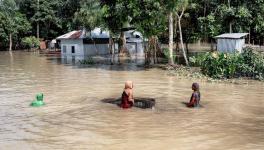From Outmaneouvred at Durban to Confusion at Warsaw
As the next round of climate negotiations opens in the Polish capital of Warsaw, there is generally no expectation of any dramatic developments. This nineteenth Conference of Parties (COP 19) of the United Framework Convention for Climate Change (UNFCCC) is not the deadline for any particular piece of negotiations to be finalised, finished or simply wound up. However despite the absence of such deadlines, there are a number of significant issues on the agenda. Of these the most important is the further steps in taking forward the Durban Platform for Enhanced Action, that was announced at the climate negotiations at Durban, South Africa, two years ago.
The Durban Platform (DPA) was basically an agreement to have a global climate agreement, by the year 2015, that would come into force by 2020, and would have binding (in some form or the other) commitments by all nations for emissions reduction as an essential part of its content. It is noteworthy that the Durban Platform did not contain any reference to such a global emissions agreement being based on equity or being in accordance with the principle of common but differentiated responsibilities. In effect the Durban Platform does not contain any explicit reference to any distinction between developed and developing countries on the subject of reduction of greenhouse gas emissions. Concurrently at Durban, the second commitment period to the Kyoto Protocol was accepted by the developed countries. However this was something of an empty victory, since some developed countries have withdrawn from the Protocol and those remaining have not significantly increased their promised emissions reductions.
The adoption of the Durban Platform was spearheaded by the European Union with the active support of many developing nations, especially from the African Group, including South Africa, the Alliance of Small Island States (AOSIS), and some Latin American nations, including Brazil. The United States while initially adopting a negative posture, switched to supporting the Platform once it was clear that such an agreement opened the door to imposing binding commitments on China and India in a few years. Regrettably, India, China, and some other nations such as Malaysia, Bolivia were isolated, and were left in the unenviable position of appearing to oppose any positive global action to curb greenhouse gas emissions.

Image Courtesy: un.org
Why did India, which had taken the lead twenty years ago in setting up the UNFCCC at the first Earth Summit, find itself eventually isolated at Durban, with a split in the ranks of the developing countries? The crux of the problem has been that official India's climate policy especially in the last five to ten years has increasingly become a do-nothing policy without any concrete proposal that would preserve both the interests of developing countries such as itself as well as protect the global environment. Developing countries had always rightfully argued that the lead in emissions reduction should be taken by the developed nations and they should be the first to begin massive reduction in emissions, developing nations would begin taking steps to ensure that their development gradually took a path of low-carbon sustainable development. However, given the need to protect the global environment, this could not mean that developing countries would do nothing or not take any binding commitment eventually to lower their share of greenhouse gas emissions. Obviously such commitments by developing countries must be based on equity and in accordance with the principle of common but differentiated responsibilities. The absence of such a well-defined proposal from the developing countries has allowed the developed countries, especially the European Union, and their friends among the G-77, to portray India and China, and those aligned with them on this issue, as playing an obstructionist role in the global climate negotiations.
In the two years since Durban, the pace of negotiations under the Durban Platform (which of course is part of the overall UNFCCC negotiations) has picked up considerably. There is now a demanding schedule that requires that a draft text for a global agreement be prepared at the next COP 20, a heads of state conference is to be convened by the UN Secretary-General next year in September and a final agreement is to be reached at Paris two years from now at COP 21. In the meanwhile, there has been little progress on the part of China and India in particular in articulating a new vision for a global agreement that would be based on equity and yet adequate in preserving the global environment.
Given this background, the Union Cabinet's guidelines to India's delegation to Warsaw marks a significant deviation from what has been India's established climate policy so far. While the long-standing policy stance of India has been for binding emission commitments by developed countries, that are sufficient in terms of climate science and takes into account historical responsibility, New Delhi has now opted to support the idea of “voluntary commitments” for emissions reduction by all nations. This approach has been championed notably by the United States, which claims that it will only undertake as much emissions reduction as is feasible. The UPA government has opted to now turn its back on our long-standing policy of treating the atmosphere as a global commons that should be equitably shared, and shift to an approach that will allow the developed countries to evade their due share of the burden of emissions reduction.
To understand the dangers of this shift in India's climate policy we need to grasp the reason why such an approach is inimical to India's interests. There can be no doubt that India needs an early climate agreement for two reasons. On the one hand, there is increasing evidence that unchecked global warming would lead to increasingly severe effects in several sectors, especially agriculture and water, apart from the increased frequency of extreme climate events. The enhanced climate variability that accompanies global warming will have serious impacts on Indian farmers, the bulk of whom are small-holders who even today suffer the consequences of weather and climate shocks, before the effects of global warming have risen to more alarming levels. An early climate agreement with the potential to restrict global average temperature rise to at least 2 degrees Centigrade, if not lower, is certainly a necessity. An early and effective limit on greenhouse gas emissions will also contribute to lowering the need, and associated costs, for climate change adaptation, which otherwisen could be considerable.
At the same time, India needs adequate atmospheric “space” in terms of allowed carbon emissions to pursue its development. Even in a highly optimistic scenario in which renewable energy rapidly takes up the bulk of the requirements for sectors such as domestic lighting and heating, agriculture, and all energy needs of small-scale establishments, India will still need fossil fuels for a considerable time until reliable sources of clean energy become available for large-scale use in the expansion of industry, transportation and the like, all of which are needed for development. Even infrastructure needs for adaptation will require such emissions.
The IPCC's AR5 report has brought to the centre-stage of discussion the notion of a global carbon budget, referring to the cumulative carbon dioxide emissions into the atmosphere, from the beginning of the industrial era till the end of the 21st century, that are permissible, if the global temperature rise is to be kept below 2 deg Centigrade. For a 66% probability of keeping the rise in global average temperature below this limit, the world is allowed approximately 1000 billion tonnes of carbon emissions (taking account solely of carbon dioxide). But the nub of the issue is the equitable distribution of this space. In per capita terms, or indeed by several other measures of equitable distribution as well, the developed countries have already substantially exceeded their fair share of this global budget. As a consequence, a large number of developing countries, including China but especially India, will have to make do with less than their fair share of the global carbon space as their national carbon budgets for the future, if indeed global warming has to be kept in check.
To maximize the developing countries access to the global carbon budget, an early “top-down” agreement to impose constraints on the developed nations' consumption of carbon “space” in the atmosphere is an obvious necessity. Even more obviously, an approach based on “voluntary” commitments to emissions reduction by developed and developing countries would not address India's needs.
But as media reports indicate, this policy shift has already run into trouble, even before it has been articulated at the Ministerial level in Warsaw. The European Union is of course fully aware of the global carbon budget and hence demands that the gap between the sum of all voluntary commitments and the allowed global budget has to made up by further emissions reductions that all nations have to agree to. This demand as well as India's response that the gap must be made up by the developed nations based on historical responsibility for emissions, brings us squarely back to what is indeed a “top-down” approach.
At the end of the day, India's official position at Warsaw is marked by confusion precisely when a carefully articulated position has become even more of a necessity. Nothing illustrates more starkly the inadequacy of India's current official line than the fact that that it has allowed the term “equity reference framework” in the context of the ADP negotiations to be hijacked by other nations including nations of the African Group as well as the EU. India and its like-minded friends are left in the unenviable position of opposing this term, claiming that developing nations need not have to undertake any binding commitment, but in effect appearing to the world as opposing even an equitable global agreement.
Apart from this key issue, the other major issue under discussion is the question of loss and damage due to the impact of climate change and adequate support to regions and nations that suffer such damage. The idea, that undoubtedly has merit, is that humanitarian assistance to countries, such as Phillipines most recently, should not be on an ad hoc basis but that there should be an adequate and proper mechanism to ensure assistance to those who suffer such impacts. Unfortunately, it has not been widely noticed that this issue is something of a double edged weapon. The danger is that this mechanism may come in time to subvert the UNFCCC's articles that mandate that developing countries are to be supported for climate adaptation. Paying for the damage to the current assets of developing countries will obviously come cheaper, in fact the poorer the country the lower the value of its assets, than assisting them with their development which is what climate adaptation support will entail. Even here India does not appear to have thought through its policy stance effectively.
India's democratic opinion needs to pay close attention to the nation's official climate policy. The current trends in its evolution do not lend confidence that our vital interests, especially our people's interests, are being adequately safegurarded.
Disclaimer: The views expressed here are the author's personal views, and do not necessarily represent the views of Newsclick
Get the latest reports & analysis with people's perspective on Protests, movements & deep analytical videos, discussions of the current affairs in your Telegram app. Subscribe to NewsClick's Telegram channel & get Real-Time updates on stories, as they get published on our website.























